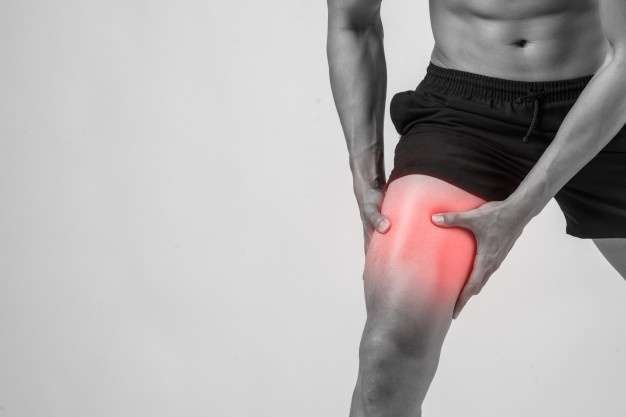Muscle Injury
Muscle Injury

A muscle is surrounded by an outer sheath that allows it to move smoothly over the surrounding tissues as it contracts. Inside the outer sheath are bundles of muscle fibers known as fascicles, which are further made up of myofibrils. These myofibrils are composed of millions of microscopic units called sarcomeres that are responsible for muscle contraction. In the sarcomere, muscle proteins called myosins pull against thin ropes of protein called actin when they are stimulated by nerves. When this occurs, the sarcomeres shorten, resulting in a contraction. When the myosin proteins relax, the sarcomeres lengthen back to their original position and so does the muscle.
Muscle injuries is a broad term encompassing many pathologies and these are common injuries in both elite and amateur athletes as well as in the general population.
Skeletal muscles injuries represent a great part of all traumas in sports medicine, with an incidence from 10% to 55% of all sustained injuries.
A muscle strain is an injury to a muscle or a tendon — the fibrous tissue that connects muscles to bones. Minor injuries may only overstretch a muscle or tendon, while more severe injuries may involve partial or complete tears in these tissues.
A muscle strain, or pulled muscle, occurs when your muscle is overstretched or torn. This usually occurs as a result of fatigue, overuse, or improper use of a muscle. Strains can happen in any muscle, but they’re most common in your lower back, neck, shoulder, and hamstring, which is the muscle behind your thigh.
Causes
- Inadequate Warm-up
- Insufficient Joint Range of Motion
- Excessive Muscle Tightness
- Fatigue / Overuse / Inadequate Recovery
- Muscle Imbalance
- Previous Injury
- Faulty Technique / Biomechanics
- Spinal Dysfunction
Symptoms
- Sudden onset of pain
- Soreness
- Limited range of movement
- Bruises or discoloration
- Swelling
- A “knotted-up” feeling
- Muscle Spasms
- Stiffness
- Weakness
Most Common Muscles Injuries
- Hamstring Strain
- Quadriceps Muscle Contusion
- Calf Strain
- Groin Strain
- Rotator Cuff Tears
- Rupture Long Head Biceps
- Achilles Rupture
Classification of Muscle Injury
Muscle lesions Or Injuries are classified as grade I, II, and III based on the number of fibers disrupted according to clinical and imaging investigations.
Grade I (mild) strains affect only a limited number of fibers in the muscle. There is no decrease in strength and there is a fully active and passive range of motion. Pain and tenderness are often delayed to the next day.
Grade II (moderate) strains have nearly half of muscle fibers torn. Acute and significant pain is accompanied by swelling and a minor decrease in muscle strength.
Grade III (severe) strains represent the complete rupture of the muscle. This means either the tendon is separated from the muscle belly or the muscle belly is actually torn in 2 parts. Severe swelling and pain and a complete loss of function are characteristic of this type of strain.
Here at Nova Health Physiotherapy Clinic, we will evaluate the causes of your pain and dysfunction, develop an individually tailored treatment plan and provide one-on-one treatment to get you to pain free life.
Book Your Appointment with Us Today !
- Neck Pain
- Back Pain
- Disc Prolapse
- Spondylosis
- Spondylolisthesis
- Ligaments Injury
- Muscle Injury
- Nerve Injury and Rehabilitation
- Shoulder Pain
- Hip Pain
- Knee Pain
- Elbow Pain
- Ankle Pain
- Wrist Pain
- TMJ Pain
- Osteoarthritis
- Rheumatoid Arthritis
- Bell’s palsy
- Peripheral Neuropathy
- Wound & Ulcers
- Stroke
- Post Fracture Rehabilitation
- Pre and Post Surgical Rehabilitation
- Post Covid Rehabilitation
- Sports Injuries Rehabilitation
- Geriatric Rehabilitation
- Women’s Health
- Posture and Ergonomic
- Headache
- Vertigo
- Migraine
- Stress and Depression
- Weight Loss
- Weight Gain
